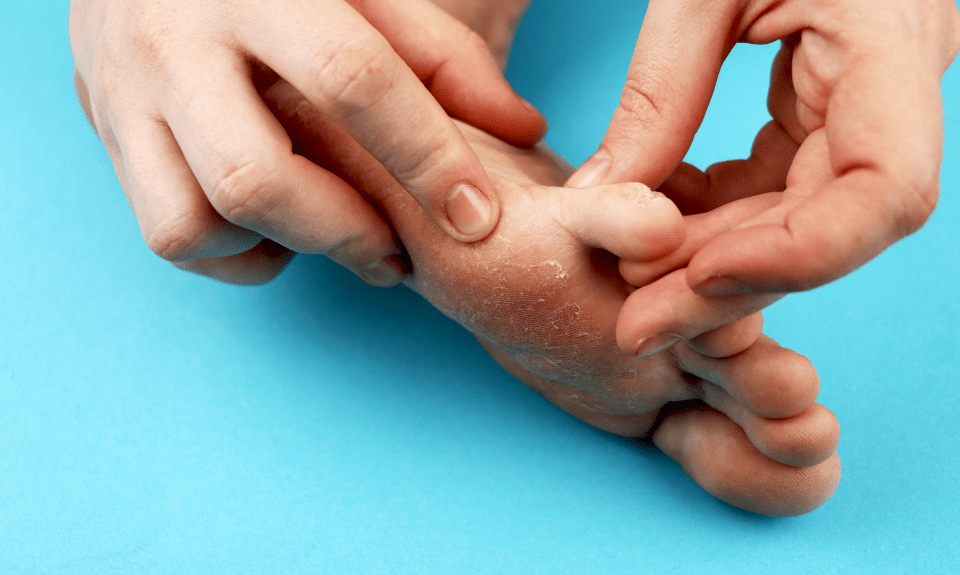Foot fungus, also known as Athletes foot, is usually caused by a specific type of fungus that lives on dead skin cells, hair, and nails. There are more than 80 types of fungi that can grow on human feet. Many of them are harmless and do not cause any harm to you.
Athlete’s foot is a fungal infection. Up to 25% of people get infected by it and it can cause an itchy and sometimes painful infection. Usually it grows between your toes but can spread to soles and toenails. It can spread by scratching the affected part of your body and then touching any other body part such as your other foot.
People diagnosed with diabetes have higher risk of getting foot infections. As the diabetes progresses, high blood sugar can lead to nerve, skin, and blood vessels damage in the foot. Because of this, patients can not feel small cuts and blisters on skin which ultimately can get infected and become ulcers. Reduced blood flow which is caused by damaged blood vessels slows down healing process and also it increases the risk of severe foot infections.
PREVENTION:
Here are some useful tips to prevent foot fungus or to reduce the risk of spreading if infection occurs:
- You need to use antifungal powder daily to prevent fungal infection of foot.
- Do not share your shoes with any other person as sharing shoes can increase the risk of getting foot infection.
- Always protect your feet in public places such as swimming pool, showers and locker rooms by wearing water proof shoes or sandals.
- Always wear well ventilated shoes or sandals and avoid wearing shoes made of synthetic material such as vinyl or rubber.
- Wear clean socks and change them regularly and if your feet get very sweaty, try to change your socks twice a day.
- Use socks of natural material such as cotton or wool that are designed to draw moisture away from your feet in order to prevent fungal infection.
- Walk barefoot to let your feet air out, dry your feet after taking a bath or shower to reduce the risk of fungal infection.
- If fungal infection occurs, try using anti-fungal ointments or powders two to three times a day to treat the rash.
- Change your shoes regularly and keep your feet dry.
- Always try to wash your feet with soap and dry them completely.
- If you live with someone who has fungal infection of their feet, do not share towels and linens.
WHEN TO SEE THE HEALTHCARE PROFESSIONAL?
Prompt medical treatment can help you to get rid of the problem. You must see a healthcare professional if the rash does not go away in a timely manner, fungal infection gets worse, you are a diabetic patient, or you are having symptoms such as excessive swelling, rash or redness, drainage, bleeding and fever.
If the patient has mild symptoms, doctors will treat it with antifungal ointments. If the condition of patient’s feet is severe, it can be treated with antifungal tablets that are taken by mouth.


